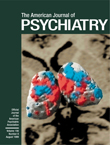This is an excellent book. I recall the first edition quite well and have used it for teaching purposes for a number of years. I am pleased to see a second edition printed. The new version contains a considerable amount of information that was unavailable at the time of the original edition. More has been learned about specific drug receptors, and the epidemiology has been considerably improved and updated.
Approximately one-fourth of all deaths can be attributed to substance-related causes, including nicotine and alcohol. Direct and indirect costs of these addictive disorders are somewhere near $300 billion per year. These are figures reliably quoted from APA and other sources. With mortality, morbidity, and financial costs at such terrible levels, one cannot ignore the problem of substance abuse. In one way or another, addictive disorders represent an added challenge to our entire health care system. Books such as this one edited by Frances and Miller are worthwhile and welcome reading.
The book starts with a brief overview from the editors. This is well written and highly appropriate. It is followed by an excellent historical prospective on substance abuse disorders written by the esteemed Joseph Westermeyer of the University of Minnesota. A great deal of good work on substance abuse disorders has come from Minneapolis, and I cannot think of a better individual to write the historical prospective portion of the introduction. This is followed by a series of chapters on diagnostic instruments and then individual chapters on specific substances of abuse. This organizational scheme works well and results in a handy reference. My only problem with this portion of the book is that the chapters are simply not complete enough. They are well written; indeed, they are page-turners if such a thing can be said of a textbook. Yet each chapter could easily have been another 25 or 45 pages longer and still not been verbose.
The chapters in the last two-thirds of the book are dedicated to treatment issues and are also well written. They start out with treatment issues for specific populations and then go on to specific modalities. The chapter on AIDS and addictions is good and necessary for virtually all practitioners these days. The chapters on geriatric addictions and minority populations are also quite good; however, they could have been more comprehensive. I personally would have felt better about the chapter on minority populations if more had been written about substance abuse problems among Hispanic individuals, particularly those in large urban areas and those living in states that border Mexico.
Although the relative gravity of each topic can be a source of criticism, it is also one of the strong points of this book. For example, a truly comprehensive textbook on addictive disorders would easily run to more than 2,000 pages in length. By keeping this book concise and managing to keep it under 700 pages, the authors provide us with a textbook that is quick to read and easy to digest. I have found over the years that residents enjoy this book and can learn from it readily. The epidemiologic data and facts are certainly kept in decent perspective and are always adequate to the needs of the clinician. The chapters are supplemented by excellent bibliographies that allow for further reading and compensate for the individual shortness of any particular chapter. The index is very helpful, and I believe that residents will find it quite useful for finding topics quickly. This book is exactly what it claims to be, that is, a clinical textbook on addictive disorders as opposed to a comprehensive textbook. The clinician will find this textbook useful and handy in a busy practice. As a certified addictions specialist, I have found it useful in my day-to-day practice for references and other materials. I highly recommend this book and will certainly keep a copy of it on my shelf.

